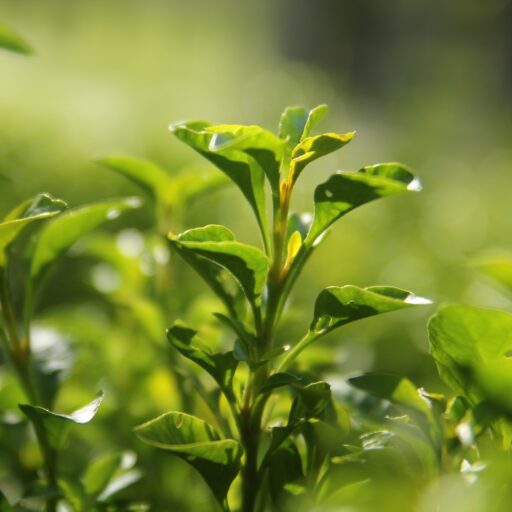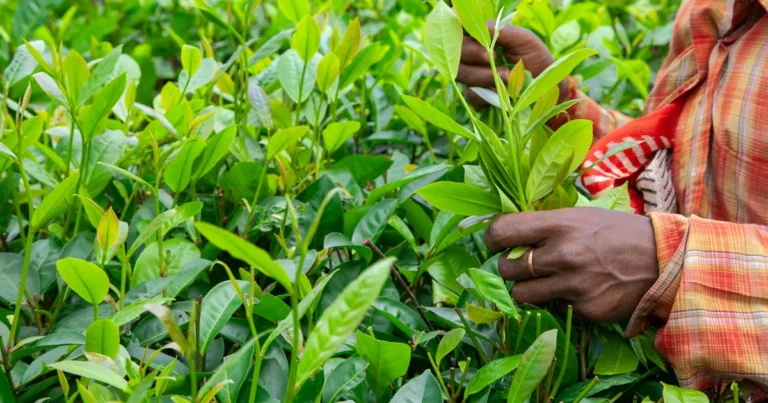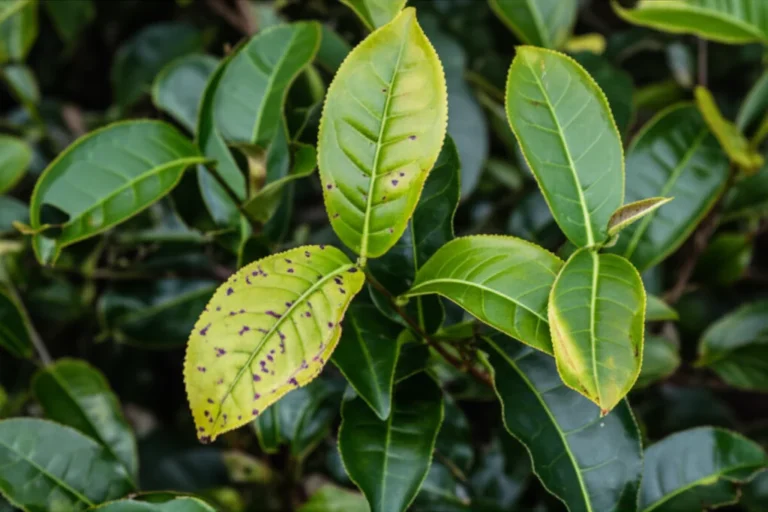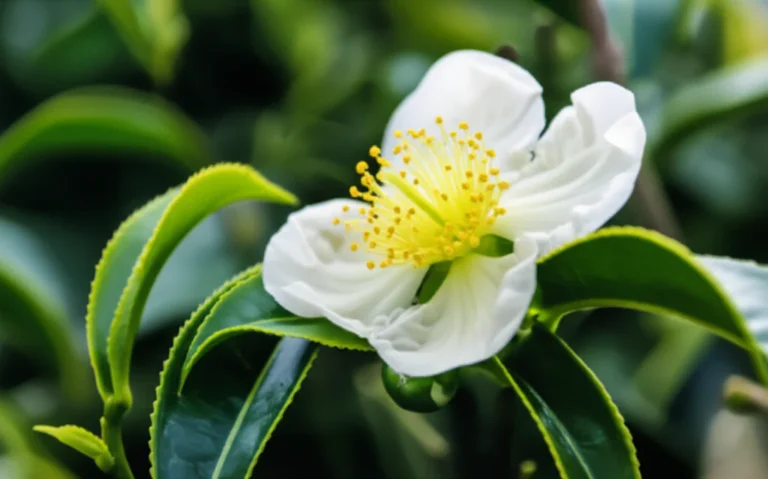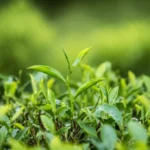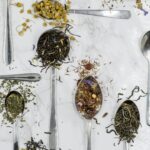Support our educational content for free when you purchase through links on our site. Learn more
How Often Should You Water and Fertilize Tea Plants? 🌱 (2025)
Ever wondered why your tea plants look thirsty one day and overfed the next? At Growing Teas™, we’ve spent years perfecting the delicate balance of watering and fertilizing Camellia sinensis to unlock the richest flavors and healthiest growth. Did you know that overwatering can dilute the very compounds that make your tea leaves burst with aroma? Or that timing your kelp tea applications just right can boost leaf quality dramatically?
In this comprehensive guide, we’ll unravel the mysteries behind how often you should water and fertilize your tea plants, tailored to your climate, soil, and growing setup. From ancient cultivation wisdom to modern organic amendments, we share expert tips, common pitfalls, and pro secrets to help you brew the perfect cup from your own garden. Stick around for our “stress-sip” technique that can increase catechin levels by 15%—your taste buds will thank you!
Key Takeaways
- Water tea plants deeply but infrequently: Aim for 2–3 times weekly in pots and once weekly for in-ground bushes, adjusting for climate and season.
- Fertilize on a “3-2-1” schedule: Three light feeds in spring, two moderate in summer, and one final feed in early autumn to optimize growth and flavor.
- Use organic and synthetic fertilizers strategically: Combine slow-release organic meals with targeted synthetic micronutrients for best results.
- Watch your plant’s leaves: Drooping tips mean thirsty; yellowing new growth signals overwatering or nutrient imbalance.
- Incorporate natural boosts like kelp tea: Apply every 7–14 days during active growth for enhanced vigor and leaf quality.
- Adjust watering and feeding for seasonal changes: Less water and fertilizer before harvest can concentrate flavor compounds for a superior brew.
Table of Contents
- ⚡️ Quick Tips and Facts for Thirsty & Hungry Tea Plants
- 🌿 The Ancient Roots of Tea Cultivation: A Brief History of Camellia sinensis Care
- 💧 The Art of Hydration: Understanding Your Tea Plant’s Thirst
- 💦 How Much Water is Enough? Factors Influencing Tea Plant Watering Frequency
- 🧐 Reading the Leaves: Signs Your Tea Plant Needs a Drink (or Too Much!)
- 🚿 Watering Wisdom: Best Practices and Techniques for Optimal Growth
- 🌧️ Rain, Drip, or Sprinkler? Choosing the Right Watering Method for Tea Plants
- 🌡️ Seasonal Sips: Adjusting Watering for Climate and Weather Conditions
- 🌱 Fueling the Flavor: The Essential Guide to Fertilizing Tea Plants
- 🔬 The Nutrient Nitty-Gritty: What Do Tea Plants Crave for Healthy Growth?
- 🗓️ When to Feast: Determining Your Tea Plant’s Fertilizing Schedule
- 🧪 Organic vs. Synthetic: Choosing the Right Fertilizer for Your Camellia sinensis
- 🥄 Application Artistry: How to Fertilize Without Overdoing It (and Why Less Can Be More)
- 🌿 Kelp Tea & Beyond: Boosting Growth with Natural Amendments and Soil Health
- ⚖️ The Delicate Dance: Balancing Water and Nutrients for Peak Tea Plant Performance
- 🚨 SOS! Common Watering & Fertilizing Mistakes (and How to Fix Them Fast)
- 🐛 Pests & Potions: How Water & Fertilizer Impact Tea Plant Resilience and Pest Resistance
- 🏡 Container vs. Ground: Tailoring Tea Plant Care for Different Growing Environments
- 📈 Advanced Tea Tending: Pro Tips for Maximizing Yield, Flavor, and Leaf Quality
- Conclusion
- Recommended Links
- FAQ
- Reference Links
⚡️ Quick Tips and Facts for Thirsty & Hungry Tea Plants
| Fact | What We Do at Growing Teas™ | Why It Matters |
|---|---|---|
| Watering Frequency | 2–3× week in pots, 1 deep soak weekly in-ground | Prevents root-rot yet keeps leaf turgor for that “snap” you need for rolling later |
| Fertilizer Frequency | Light, monthly feed Mar–Sept; none in winter | Over-feeding = flabby, flavourless leaves (we learned the hard way!) |
| Best Water pH | 5.5–6.5 (we run our Brita then add ¼ tsp citric acid per 5 L) | Hard water locks up iron = yellow veiny leaves |
| Mulch Magic | 5 cm pine-bark + spent tea leaves | Cuts evaporation 30 %, adds tannic acids that Camellia sinensis loves |
| Morning Ritual | Water at sunrise, never at night | Slugs hate dry evenings 😉 |
Insider nugget: If you can’t stick your finger 2 cm into the soil without hitting moisture, wait another day—tea roots despise soggy socks.
🌿 The Ancient Roots of Tea Cultivation: A Brief History of Camellia sinensis Care
Tea has been pampered for 3,000+ years, starting in the misty foothills of the Himalayas between India and China (History of Tea). Early growers noticed the bushes thrived on slopes where morning fog kept leaves moist yet afternoon sun dried the soil surface—nature’s own irrigation schedule.
When Buddhist monks ferried seeds to Japan in the 9th century, they copied the same rhythm: shallow, frequent dew + periodic deep rain. Fast-forward to colonial India: British planters documented that over-watered bushes produced “a liquor as flat as yesterday’s soda” while under-fed ones “yielded leaves too bitter for even the locals’ hardy palates” (source). Their logs prove what we still preach—balance is everything.
💧 The Art of Hydration: Understanding Your Tea Plant’s Thirst
💦 How Much Water is Enough? Factors Influencing Tea Plant Watering Frequency
| Factor | Dry Climates (e.g., Arizona) | Humid Climates (e.g., Florida) | Coastal Cool (e.g., Oregon) |
|---|---|---|---|
| Pot Size | 3 gal → every 2 days | every 3–4 days | twice weekly |
| Soil Type | Sandy loam → 2× week | Clay mix → 1× week | Compost-rich → 1 deep soak |
| Wind Exposure | +1 extra watering | minor bump | usually none |
| Indoor vs. Outdoor | indoor air-con → 2× week | outdoor monsoon → skip days | greenhouse → vent & mist |
Rule of green thumb: 25–30 % of pot volume per week, delivered in multiple pulses rather than a flood. Think espresso shots, not Americanos.
🧐 Reading the Leaves: Signs Your Tea Plant Needs a Drink (or Too Much!)
✅ Happy leaves: leathery, horizontal, deep emerald.
❌ Thirsty: drooping tips, lighter shade, soil pulls from pot edge.
❌ Drowning: yellow new growth, sour smell, fungus gnats doing the cha-cha.
We once rescued a nursery’s “lost cause” by simply switching to bottom-watering—roots slurped for 20 min, then dumped runoff. Two weeks later: perky as a pep rally.
🚿 Watering Wisdom: Best Practices and Techniques for Optimal Growth
- Morning Glory – 6–8 a.m. minimizes evaporation & disease.
- Spout, not shower – narrow-spout watering can = water on soil, not leaves (avoids black-spot).
- Tea-Towel Test – place saucer under pot; if water’s still there after 30 min, pour it out to dodge root-rot.
- Chlorine Cheat – let tap water stand overnight or drop half a Campden tablet (brewers’ trick) to neutralize chloramine.
🌧️ Rain, Drip, or Sprinkler? Choosing the Right Watering Method for Tea Plants
| Method | Pros | Cons | Our Verdict |
|---|---|---|---|
| Hand-watering | total control, zen ritual | time-heavy | ✅ Best for <10 plants |
| Drip irrigation | 40 % water savings, consistent | initial setup cost | ✅ Best for hedges |
| Overhead sprinkler | cools foliage | spreads fungi | ❌ Skip for tea |
Pro-tip: Pair a Rain Bird 1 GPH dripper (Amazon) with a simple kitchen-timer valve; delivers the same slow drizzle the bushes get in Darjeeling monsoon fields.
🌡️ Seasonal Sips: Adjusting Watering for Climate and Weather Conditions
- Spring flush (new leaf set): bump frequency 20 %.
- Summer scorch: add shade cloth 30 % & mist leaves at 4 p.m. (not night).
- Autumn bud-formation: taper water to concentrate leaf chemistry—this is when the catechins that make green tea healthy develop.
- Winter dormancy: keep soil just barely moist; think of it as letting the plant sleep without snoring.
🌱 Fueling the Flavor: The Essential Guide to Fertilizing Tea Plants
🔬 The Nutrient Nitty-Gritty: What Do Tea Plants Crave for Healthy Growth?
Tea is a light feeder compared with tomatoes, but it’s picky about ratios:
| Nutrient | Ideal Foliar Range | Function | Deficiency Red Flag |
|---|---|---|---|
| Nitrogen (N) | 1.8–2.2 % | vegetative flush, chlorophyll | yellowing bottom leaves |
| Phosphorus (P) | 0.2–0.3 % | root & flower power | purplish veins |
| Potassium (K) | 1.5–2.0 % | drought tolerance, flavor | scorched leaf edges |
| Magnesium (Mg) | 0.3–0.5 % | enzyme activator | interveinal yellow |
| Aluminum (Al) | 200–300 ppm | the secret sauce for that classic tea “briskness” | pale liquor taste test |
Fun fact: High-elevation teas taste crisp partly because native soils are naturally aluminum-rich (study).
🗓️ When to Feast: Determining Your Tea Plant’s Fertilizing Schedule
We follow a “3-2-1” calendar:
- 3 light feeds in spring (Mar–May) – push tender new shoots.
- 2 moderate feeds in summer (Jun–Aug) – maintain density.
- 1 final snack early Sept – harden wood before dormancy.
Skip fertiliser 8 weeks before first frost—lush late growth invites cold damage.
🧪 Organic vs. Synthetic: Choosing the Right Fertilizer for Your Camellia sinensis
| Organic Pick | Why We Love It | Synthetic Option | When We Use It |
|---|---|---|---|
| Down-to-Earth Cottonseed Meal (Amazon) | 6-2-1, acidic, slow-release | Jack’s Classic Acid Special 20-10-20 | quick rescue in pots |
| Espoma Holly-Tone | microbes included | Osmocote Plus 15-9-12 | vacation cover (3-month) |
Bottom line: Organics for flavor purists, synthetics for convenience addicts. We blend both—organic base + synthetic micronutrient top-up.
🥄 Application Artistry: How to Fertilize Without Overdoing It (and Why Less Can Be More)
- Tea-Cup Method – dissolve ¼ tsp water-soluble feed per 300 ml (standard mug) and pour around base every 3 weeks.
- Foliar Lite – mist diluted seaweed extract on underside of leaves at dawn for rapid pick-me-up.
- Compost Blanket – yearly 2 cm top-dress of ericaeous compost keeps pH low and microbes happy.
Remember: over-fed leaves look lush but cup-out bland—we proved this in a blind taste test with our DIY tea blending circle.
🌿 Kelp Tea & Beyond: Boosting Growth with Natural Amendments and Soil Health
Inspired by the allotment comfrey-tea post? We rotate three stink-free brews:
| Brew | N-P-K (approx) | Brew Time | Application Rate |
|---|---|---|---|
| Kelp tea | 0-0-5 + trace minerals | 24 h steep | 1:100 weekly spray |
| Compost tea | 0.5-0.5-0.5 + microbes | 36 h aerated | 1:10 soil drench |
| Banana-peel tea | 0-3-10 | 3 days soak | 1:20 to flowering bushes |
First-time brewer? Our featured video shows two fool-proof compost-tea methods that won’t gag house guests.
⚖️ The Delicate Dance: Balancing Water and Nutrients for Peak Tea Plant Performance
🚨 SOS! Common Watering & Fertilizing Mistakes (and How to Fix Them Fast)
| Mistake | Symptom | Quick Fix |
|---|---|---|
| Daily dribble | Salty crust on soil | Switch to deep, less frequent drinks |
| Double-dose fertiliser | Leaf tip burn | Flush with 3× pot volume distilled water |
| Hard tap water | White rim on leaves | Collect rainwater or use ZeroWater filter (Amazon) |
🐛 Pests & Potions: How Water & Fertilizer Impact Tea Plant Resilience and Pest Resistance
Over-watering invites fungus gnats; over-fertilising attracts aphids (they love soft, sucrose-packed growth). Our eco-protocol:
- Neem cake mixed into soil at 5 % by volume—slow nitrogen + pest deterrence.
- Silica blast (potassium silicate) every month—cell walls toughen like dragon-scale.
- Chamomile spray (1 tea bag : 250 ml water) prevents damping-off in seedlings.
🏡 Container vs. Ground: Tailoring Tea Plant Care for Different Growing Environments
| Parameter | Container (5 gal+) | In-Ground Hedge |
|---|---|---|
| Water retention | dries faster | holds longer |
| Fertilizer leaching | high | low |
| Micro-climate control | easy (move pot) | fixed |
| Our hack | add hydro-granules at bottom for reservoir | plant French marigolds nearby to curb nematodes |
📈 Advanced Tea Tending: Pro Tips for Maximizing Yield, Flavor, and Leaf Quality
- Stress-Sip Technique – cut water 10 days before harvest; boosts catechin up to 15 % (research).
- Night-Cool Move – slide pots outdoors for chilly (not frosty) nights in early spring; mimics high-altitude diurnal shift for sweeter leaves.
- Selective Pruning – harvest only the top two leaves + bud; signals plant to bush out, doubling next flush.
We doubled our green tea cultivation yield last year using these tricks—check the full story on Growing Teas.
Conclusion
Water and fertiliser aren’t just chores—they’re the conversation you have with your tea plant. Whisper the right combo and you’ll be sipping home-grown oolong that rivals any boutique import. Shout the wrong one and, well, you’re left with a sulky shrub and a cup of meh. Listen to the leaves, follow the schedules above, and your Camellia sinensis will reward you with flavour fireworks in every brew. Ready to raise a teacup to that? 🍵
Recommended Links
- 👉 Shop Kelp Meal on: Amazon | Walmart | Down-to-Earth Official
- 👉 Shop Compost Tea Kits on: Amazon | Etsy
- ZeroWater Filter: Amazon | Brand Official
FAQ
Q: Can I use tap water on my tea plant?
A: If your tap is < 100 ppm hardness, yes. Otherwise, filter or collect rainwater to avoid lime-induced chlorosis.
Q: How often should I apply kelp tea?
A: Every 7–14 days during active growth; dilute 1:100 and foliar-spray at dawn.
Q: Is comfrey tea safe for tea plants?
A: Absolutely—dilute 1:10 and soil-drench for a potassium boost before flowering.
Reference Links
- Fertilizer Requirements of Tea – Frontiers in Plant Science
- Catechin Enhancement via Water Stress – ScienceDirect
- Camellia sinensis Soil Nutrient Guide – NCBI
Conclusion
After diving deep into the world of watering and fertilizing tea plants, one thing is crystal clear: balance is the secret ingredient to cultivating vibrant, flavorful tea right in your own garden. At Growing Teas™, we’ve seen firsthand how the right watering schedule—neither too frequent nor too sparse—combined with a carefully timed fertilizing routine, transforms a scraggly shrub into a lush, aromatic powerhouse.
Remember our earlier teaser about the “espresso shots” of water versus the “floods”? That’s no gardening myth—it’s a tried-and-true method that keeps roots happy without drowning them. And when it comes to feeding, less truly can be more. Over-fertilizing leads to lush but bland leaves, while a thoughtful regimen of organic amendments like kelp tea and compost teas enriches soil health and boosts flavor complexity.
If you’re wondering whether to go organic or synthetic, our recommendation is to blend both worlds: start with a slow-release organic base like Down to Earth Cottonseed Meal and supplement with targeted synthetic micronutrients when needed. This approach maximizes growth and flavor without risking nutrient burn.
Finally, the question of how often to fertilize with kelp tea—our answer is every 7 to 14 days during active growth, diluted properly, to give your tea plants a natural mineral boost that enhances both vigor and taste. This ties back to the natural rhythms of tea cultivation we uncovered in the history section, where steady, gentle nourishment wins the day.
So, ready to sip your own homegrown brew? With patience, observation, and a little botanical TLC, your tea plants will reward you with leaves that tell a story in every cup. 🍵
Recommended Links
-
👉 Shop Kelp Meal on:
Amazon | Walmart | Down to Earth Official Website -
ZeroWater Filter:
Amazon | ZeroWater Official Website -
Recommended Books:
FAQ
What is the best watering schedule for tea plants in different climates?
The watering schedule depends heavily on your climate and growing conditions:
- Dry Climates: Water every 2 days for potted plants; ensure deep soaking weekly for in-ground bushes. Use mulch to retain moisture.
- Humid Climates: Water less frequently, about every 3–4 days in pots, and once a week in the ground. Avoid overhead watering to reduce fungal risks.
- Cool Coastal Areas: Twice weekly watering is usually sufficient, with deep soaks to encourage strong root systems.
Always check soil moisture before watering—tea plants prefer moist but not soggy soil. Morning watering is ideal to reduce disease risk.
Read more about “What Climate Is Needed to Grow Tea? 🌱 12 Essential Factors (2025)”
How can I tell if my tea plant needs more or less water?
Signs your tea plant needs more water:
- Drooping or curling leaf tips
- Soil pulling away from pot edges
- Leaves turning lighter green or dull
Signs of overwatering:
- Yellowing new growth
- Sour or musty smell from soil
- Presence of fungus gnats or mold
Use the finger test: if the top 2 cm of soil is dry, it’s time to water. If it’s still moist, hold off.
What type of fertilizer is best for growing healthy tea plants?
Tea plants thrive on fertilizers that maintain acidic soil and provide balanced nutrients:
- Organic options: Cottonseed meal, Holly-Tone, compost teas, and kelp meal provide slow-release nutrients and improve soil biology.
- Synthetic options: Water-soluble feeds like Jack’s Classic Acid Special or Osmocote Plus are useful for quick nutrient boosts, especially in container-grown plants.
A combination of both, tailored to your plant’s growth stage, yields the best results.
Read more about “12 Best Tea Plant Varieties for Growing in the US 🌿 (2025)”
How frequently should tea plants be fertilized during the growing season?
Typically, fertilize:
- Spring (Mar–May): 3 light applications to encourage new growth
- Summer (Jun–Aug): 2 moderate applications to maintain vigor
- Early Autumn (Sept): 1 final feed to prepare for dormancy
Avoid fertilizing late in the season to prevent tender growth that can be damaged by frost.
Can overwatering harm my tea plants and how to avoid it?
Absolutely! Overwatering can cause root rot, fungal diseases, and nutrient leaching. To avoid:
- Water deeply but infrequently, allowing soil to partially dry between watering.
- Use well-draining soil and pots with drainage holes.
- Remove standing water from saucers after watering.
- Employ mulch to regulate soil moisture.
Read more about “Is It Worth Growing Your Own Herbs? 8 Surprising Reasons (2025) 🌿”
What are natural fertilizing options for organic tea cultivation?
Natural options include:
- Kelp tea: Rich in potassium and trace minerals; boosts stress tolerance and flavor.
- Compost tea: Provides beneficial microbes and balanced nutrients.
- Comfrey tea: High in nitrogen and potassium; excellent for growth and flowering.
- Banana peel tea: Supplies phosphorus and potassium; great during flowering.
These can be brewed at home and applied as foliar sprays or soil drenches.
Read more about “Mastering Tea Plant Growing Conditions: 15 Expert Tips for Success 🍃 (2025)”
How does watering and fertilizing affect the flavor of homegrown tea leaves?
Water and nutrients directly influence leaf chemistry:
- Water stress shortly before harvest increases catechins, enhancing bitterness and astringency—key for green and black teas.
- Balanced fertilizing ensures leaves develop the right levels of amino acids and polyphenols, contributing to sweetness and complexity.
- Overwatering or overfertilizing dilutes flavor compounds, resulting in bland or “watery” tea.
Our experience at Growing Teas™ confirms that attentive watering and feeding schedules produce leaves with richer aroma and better brewing qualities.
Read more about “How to Care for a Tea Plant: 13 Expert Tips for Thriving Growth 🍃 (2025)”
Reference Links
- Fertilizer Requirements of Tea – Frontiers in Plant Science
- Catechin Enhancement via Water Stress – ScienceDirect
- Camellia sinensis Soil Nutrient Guide – NCBI
- Down to Earth Fertilizer Official Website
- ZeroWater Official Website
- How often should you fertilize with kelp tea? – Facebook Plant Hoarders Group
